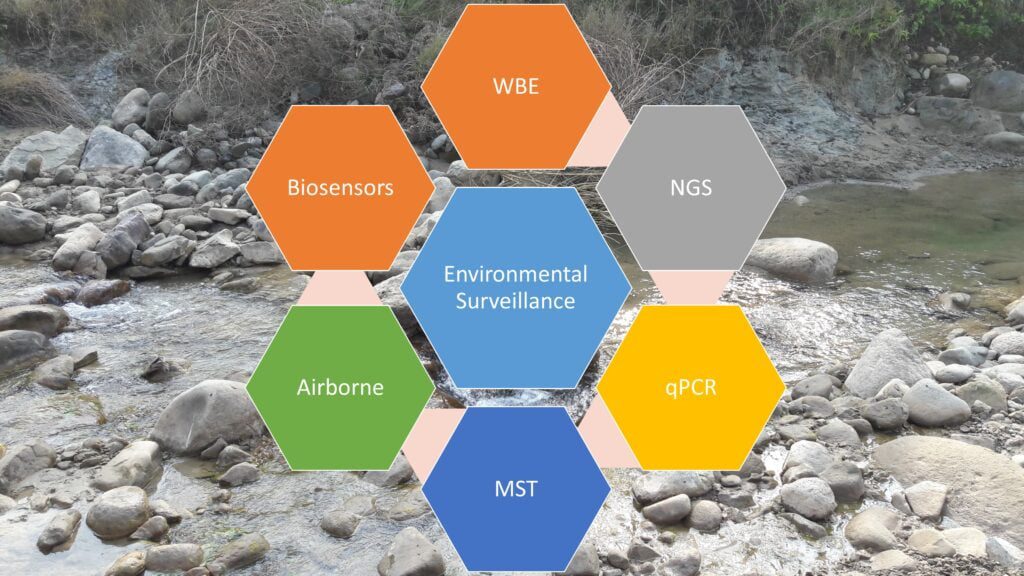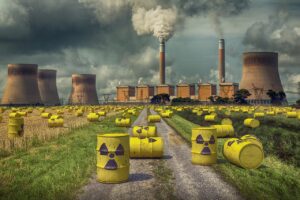
Environmental surveillance is revolutionizing public health by early detection of potential threats through the systematic collection and analysis of ecological matrix. This method helps spot disease outbreaks or pollution events before they escalate, enabling timely interventions to protect community health. Environmental surveillance is employed worldwide to enhance public health. Countries like Finland and Singapore have advanced systems monitoring various environmental parameters. International collaborations are also vital, as environmental threats often transcend borders.
How Environmental Surveillance Works?
Environmental surveillance collects data from various sources such as water, air, soil, food and potential surfaces. This data includes chemical pollutants and biological agents like bacteria and viruses. Advanced monitoring devices and sensors play a crucial role in data collection, which is then analyzed to identify patterns and potential threats. For example, an unusual spike in certain bacteria in a water and wastewater source could indicate contamination. It involved (1) sampling of the environmental matrix, (2) processing, (3) detection and characterization, and (4) integration with healthcare and emergency response systems.
Technological Innovations
1. Wastewater-Based Epidemiology or Wastewater Surveillance (WBE)
Wastewater-based epidemiology (WBE) analyzes wastewater for viral markers and antibiotic resistance, enabling non-invasive and cost-effective detection of pathogens like SARS-CoV-2, poliovirus, and bacterial pathogens before widespread outbreaks. This approach provides population-level data and early detection potential. Many nations have started environmental surveillance based on wastewater for pandemic preparedness using a multi-pathogen monitoring approach.
WBE can detect pathogens in wastewater before clinical cases are reported, providing an early warning system for emerging infectious diseases. This allows for timely public health interventions. For example, monitoring influenza viruses in wastewater can provide insights into the seasonal patterns of flu outbreaks, helping to inform vaccination campaigns and healthcare resource allocation. Recently, WBE has been used as an early warning system for SARS-CoV-2 and its mutations in the population.
2. Microbial Source Tracking (MST)
MST identifies sources of faecal contamination in water samples, allowing targeted interventions in areas with high infection rates. This technique significantly aids public health tracking. MST methods identify specific sources of microbial contamination, such as human sewage, agricultural runoff, or wildlife waste. This information is vital for targeting remediation efforts and preventing further contamination. Next-generation sequencing (NGS) or Quantitative PCR (qPCR ) is commonly used in MST to detect and quantify specific genetic markers associated with different sources of contamination.
3. Airborne Pathogen Detection
Air sample monitoring is important in environmental surveillance for respiratory viruses such as influenza and COVID-19. This real-time monitoring is particularly valuable in healthcare settings or crowded indoor spaces.
Identifying harmful microorganisms in the air helps to manage and mitigate the spread of infectious diseases, ensuring cleaner air quality, and protecting vulnerable populations. Detecting pathogens in the air can provide early warnings of potential disease outbreaks. This enables health authorities to take prompt actions, such as isolating affected areas, enhancing hygiene practices, and initiating public health campaigns. During the COVID-19 pandemic, airborne pathogen detection systems were used in hospitals and public spaces to monitor the presence of SARS-CoV-2, allowing for early intervention and reducing transmission rates.
4. Biosensor Technology
Advancements in biosensor technology pave the way for real-time monitoring systems for environmental samples, enabling faster detection and response to public health threats. It plays a crucial role in surveillance by providing rapid, sensitive, and specific detection of various environmental contaminants, including pathogens, pollutants, and toxins. These devices convert biological responses into measurable signals, allowing real-time monitoring. Therefore, biosensors can detect specific pathogens in the environmental matrix. They use antibodies, nucleic acids, or enzymes that interact with target pathogens, producing a measurable signal.
5. Polymerase Chain Reaction (PCR)
PCR applications play a crucial role in environmental surveillance due to their sensitivity, specificity, and ability to detect low concentrations of genetic material from pathogens in various environmental samples. In addition, PCR is instrumental in identifying emerging pathogens in the environment. Researchers can quickly identify and track the spread of new infectious agents by using specific primers designed for novel pathogens, providing crucial data for public health responses.
6. Next-Generation Sequencing (NGS)
NGS plays a pivotal role in environmental surveillance due to its high throughput, accuracy, and ability to provide comprehensive insights into the genetic composition of complex environmental samples. It allows simultaneous detection and identification of a wide array of pathogens, including bacteria, viruses, fungi, and parasites, within a single environmental sample. This broad-spectrum capability is crucial for detecting known pathogens and discovering novel or emerging infectious agents. In addition, it enables metagenomic analyses, which involve sequencing the collective genomes of all microorganisms present in an environmental sample. In addition, sequencing of the hypervariable region (small subunit rRNA) allowed the identification of signature microbial species. This approach provides detailed insights into microbial diversity, community structure, and functional potential, offering a holistic view of the microbial ecosystem.
Applications of Environmental Surveillance in Public Health
1. Monitoring Infectious Diseases
One significant application of environmental surveillance is tracking infectious diseases. Early detection of pathogens such as bacteria and viruses is crucial for preventing outbreaks, as seen with wastewater surveillance track COVID-19.
2. Tracking Environmental Hazards
Environmental surveillance is vital for tracking hazards such as chemical spills or air pollution, allowing for timely interventions to protect public health.
3. Water and Air Quality Control
Continuous monitoring of water and air quality is essential for maintaining public health. Environmental surveillance helps identify deviations from safe levels, ensuring these resources remain safe for the community.
4. Community Involvement
Public awareness and education are crucial for the success of environmental surveillance. Engaging local communities in monitoring efforts can provide valuable data and foster a sense of ownership and responsibility. Simple actions like reporting unusual environmental changes or participating in citizen science projects can significantly contribute.
Conclusion
Environmental surveillance is emerging as a critical tool for public health. Early warning signals of potential health threats, enable timely and effective interventions. The advanced technologies, global collaboration, and community involvement will further enhance its impact. As we look to the future, continued investment and ethical considerations will be key to maximizing the benefits of environmental surveillance for public health.

